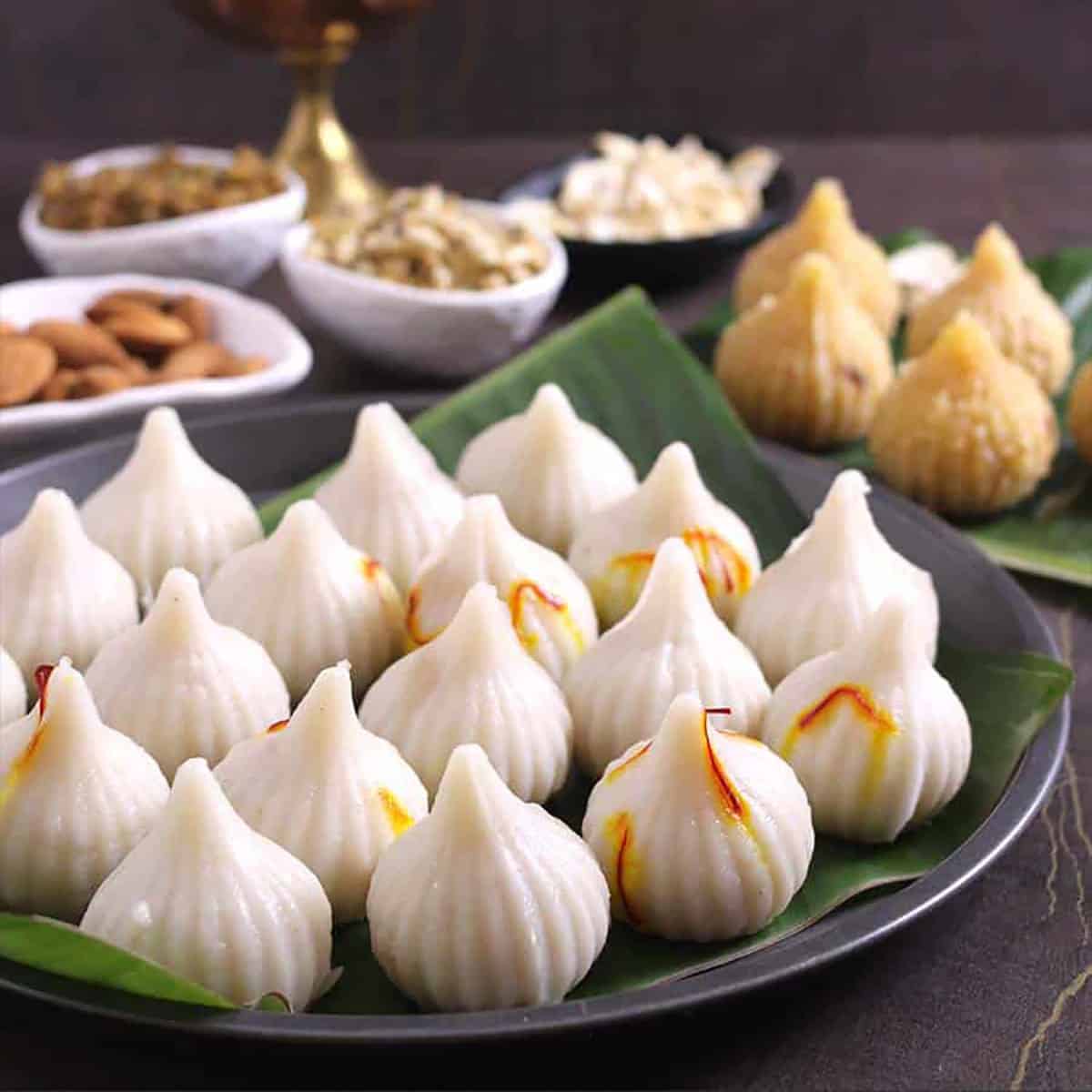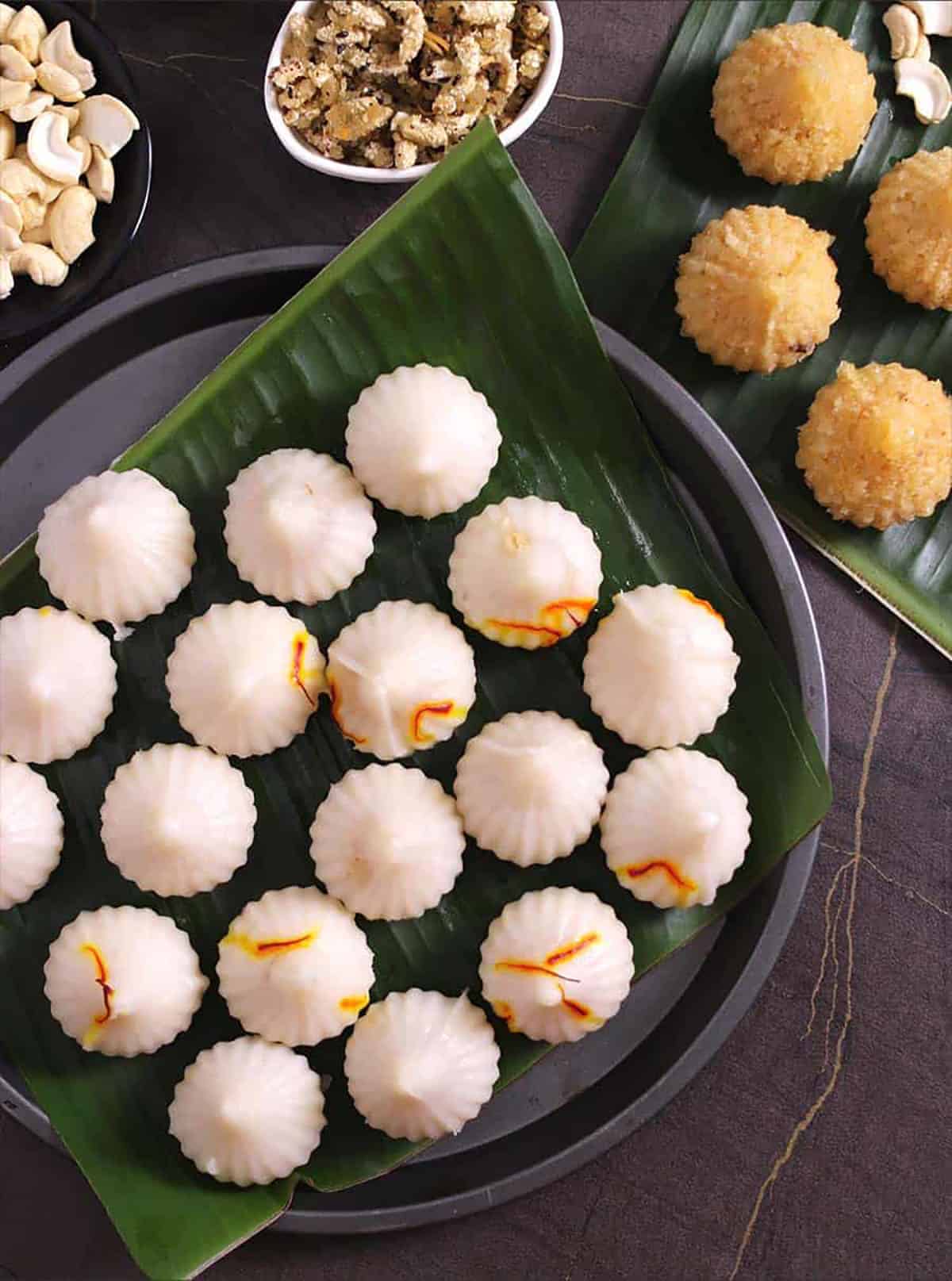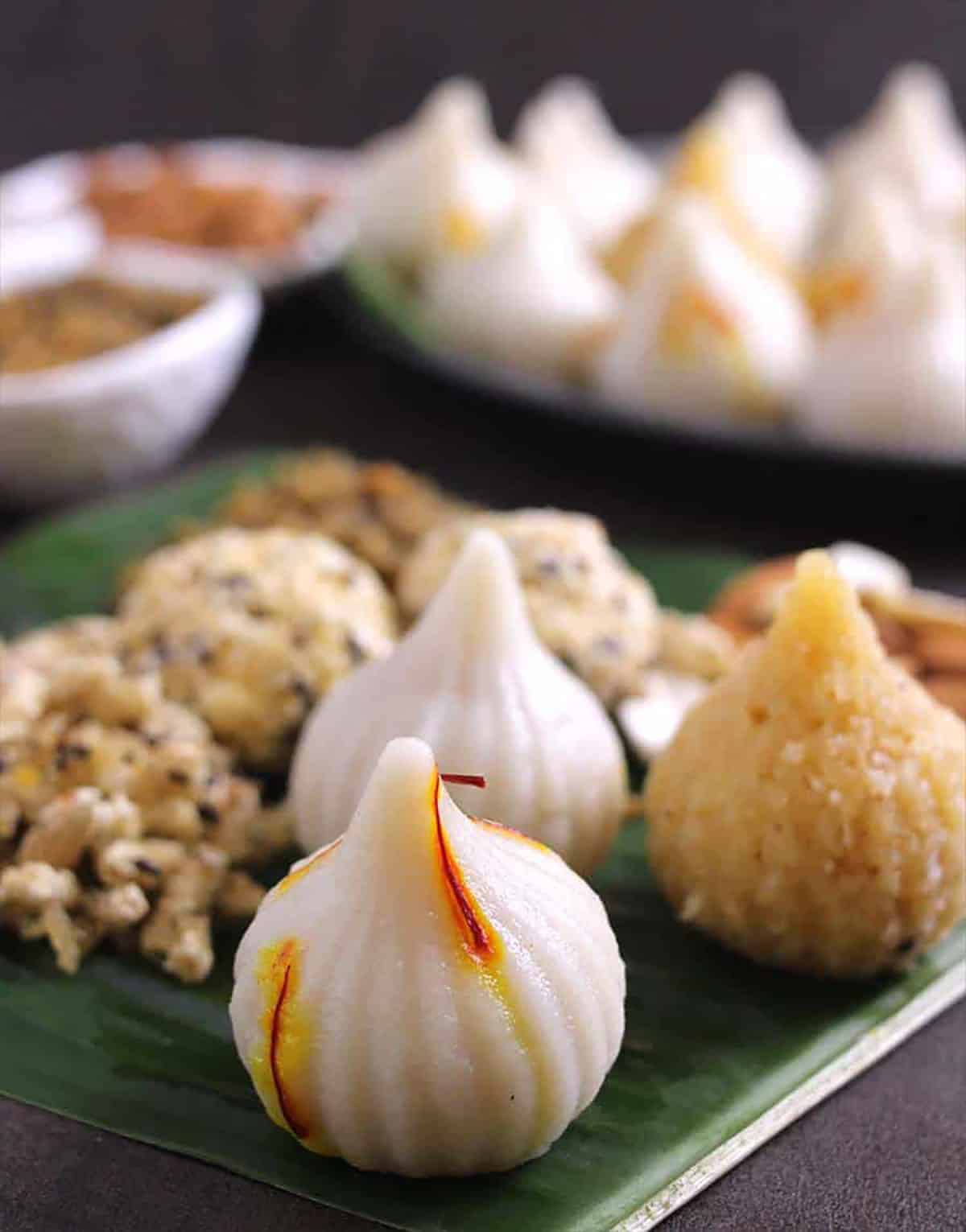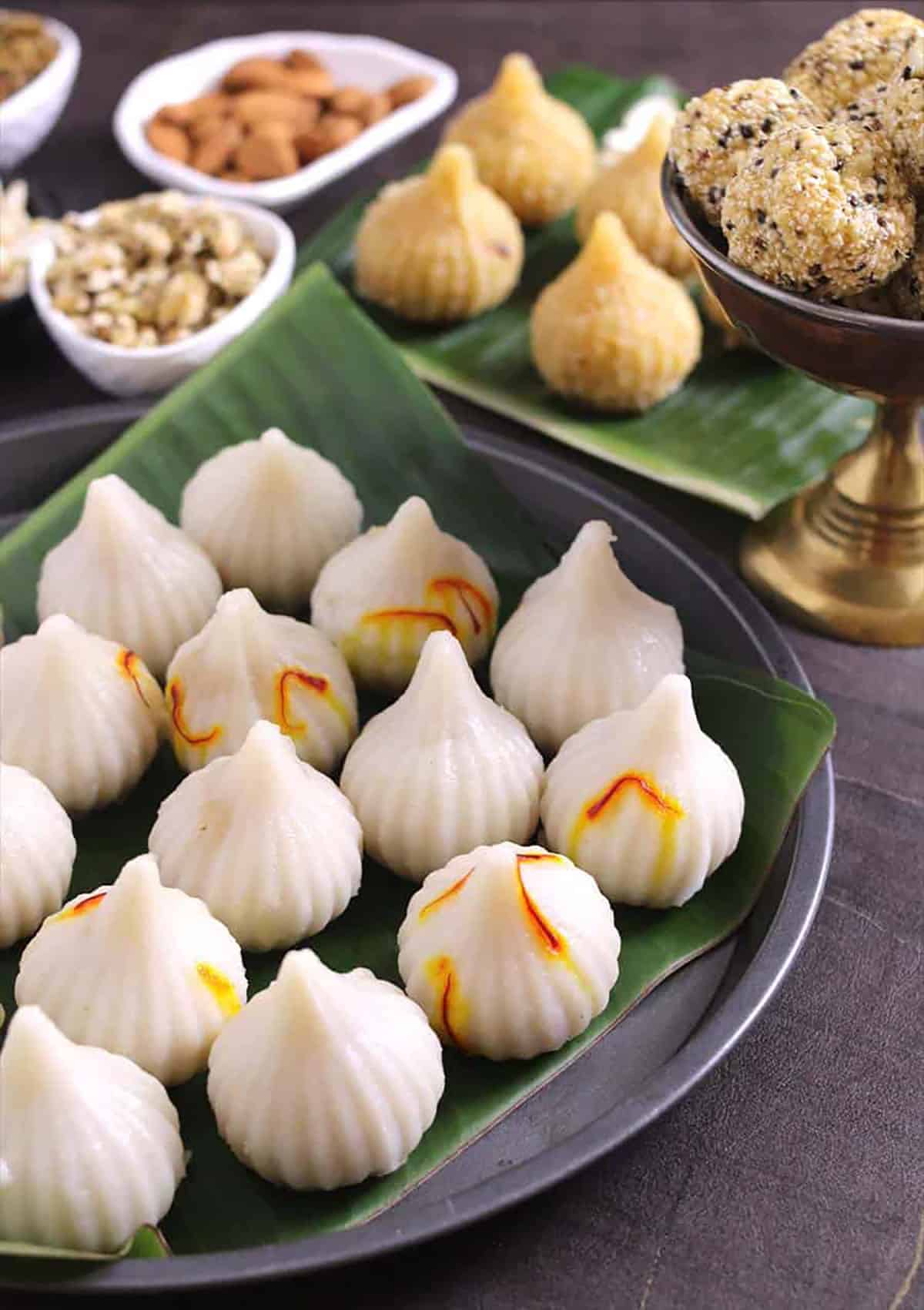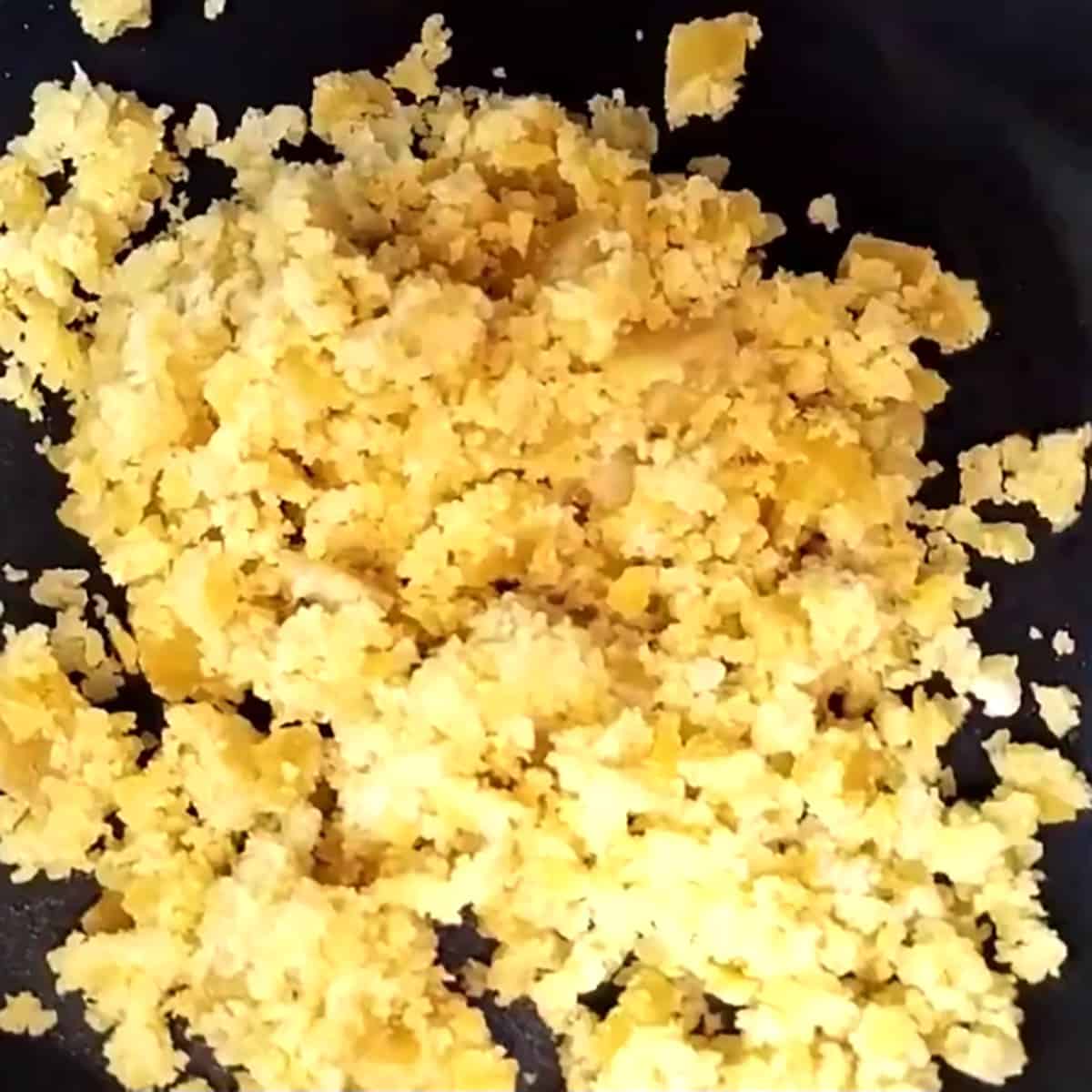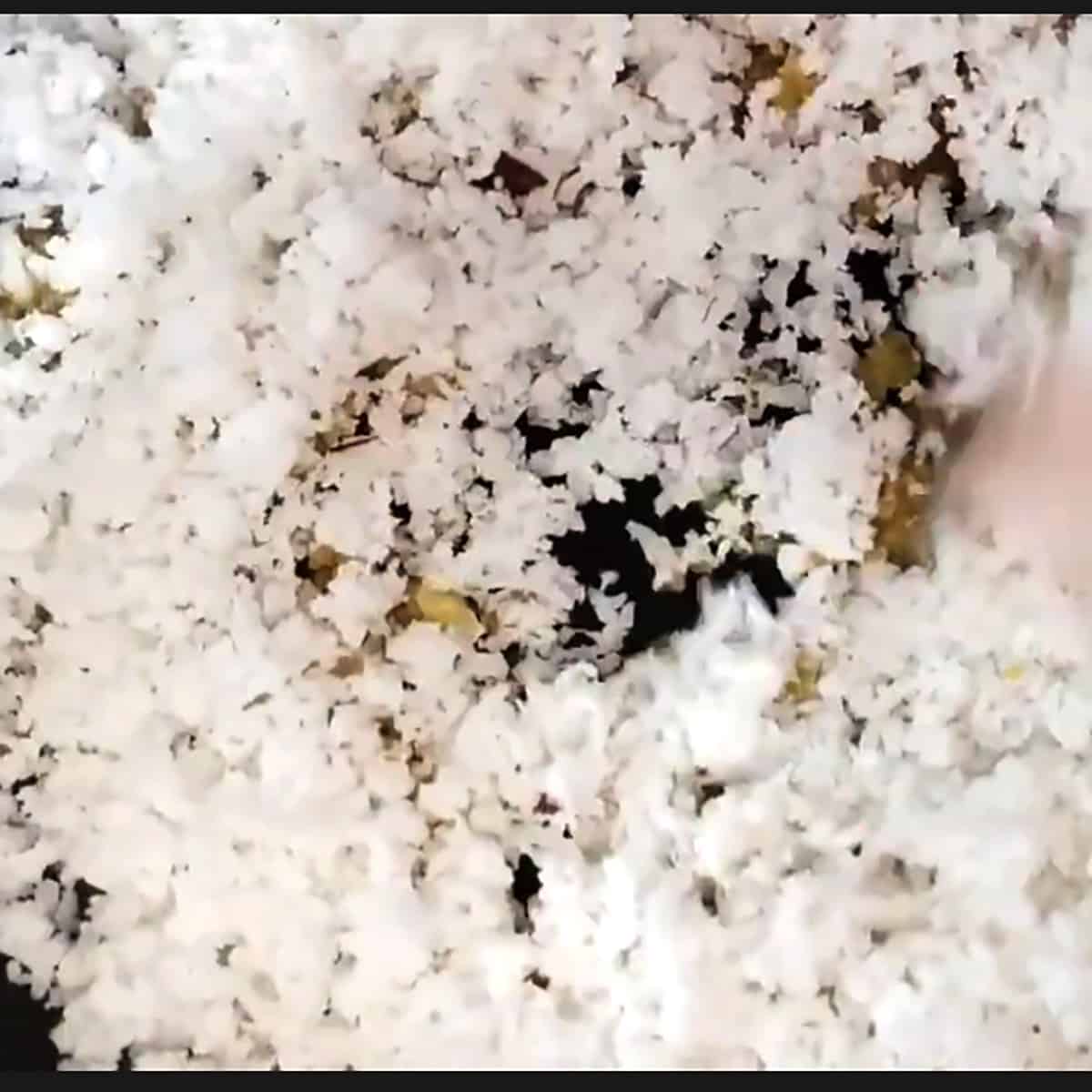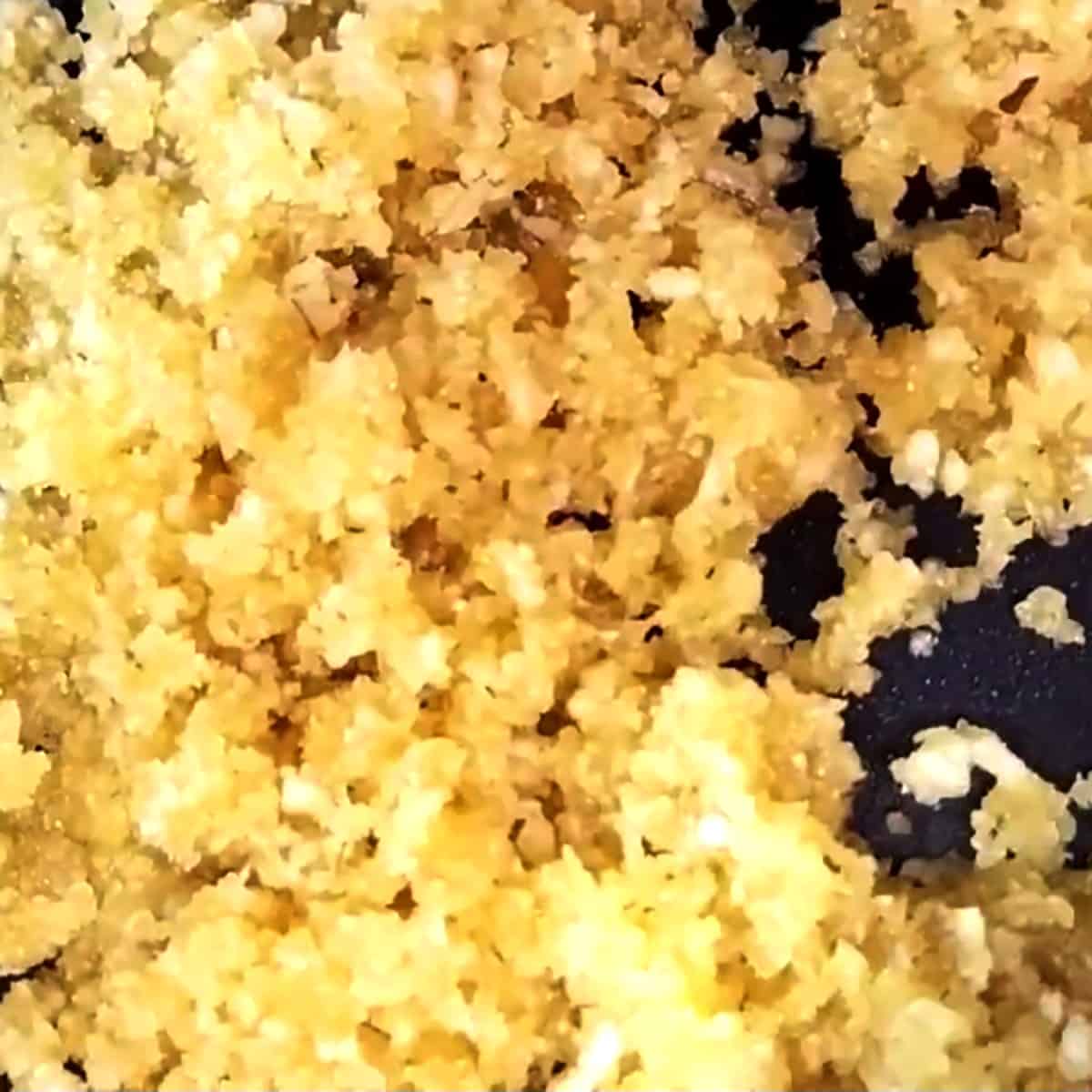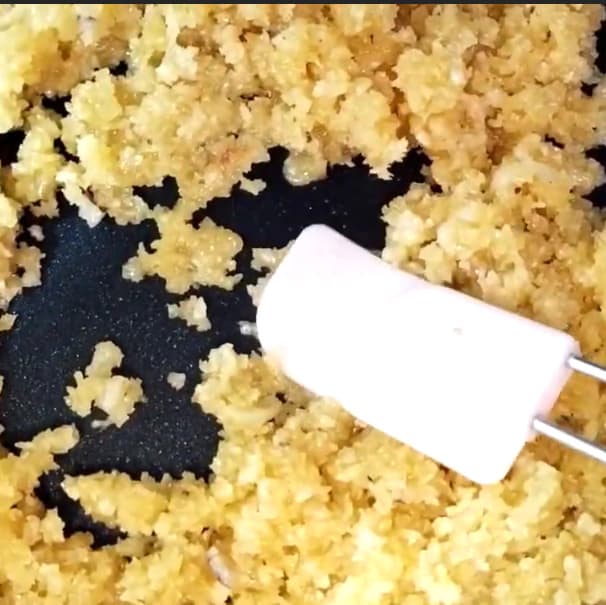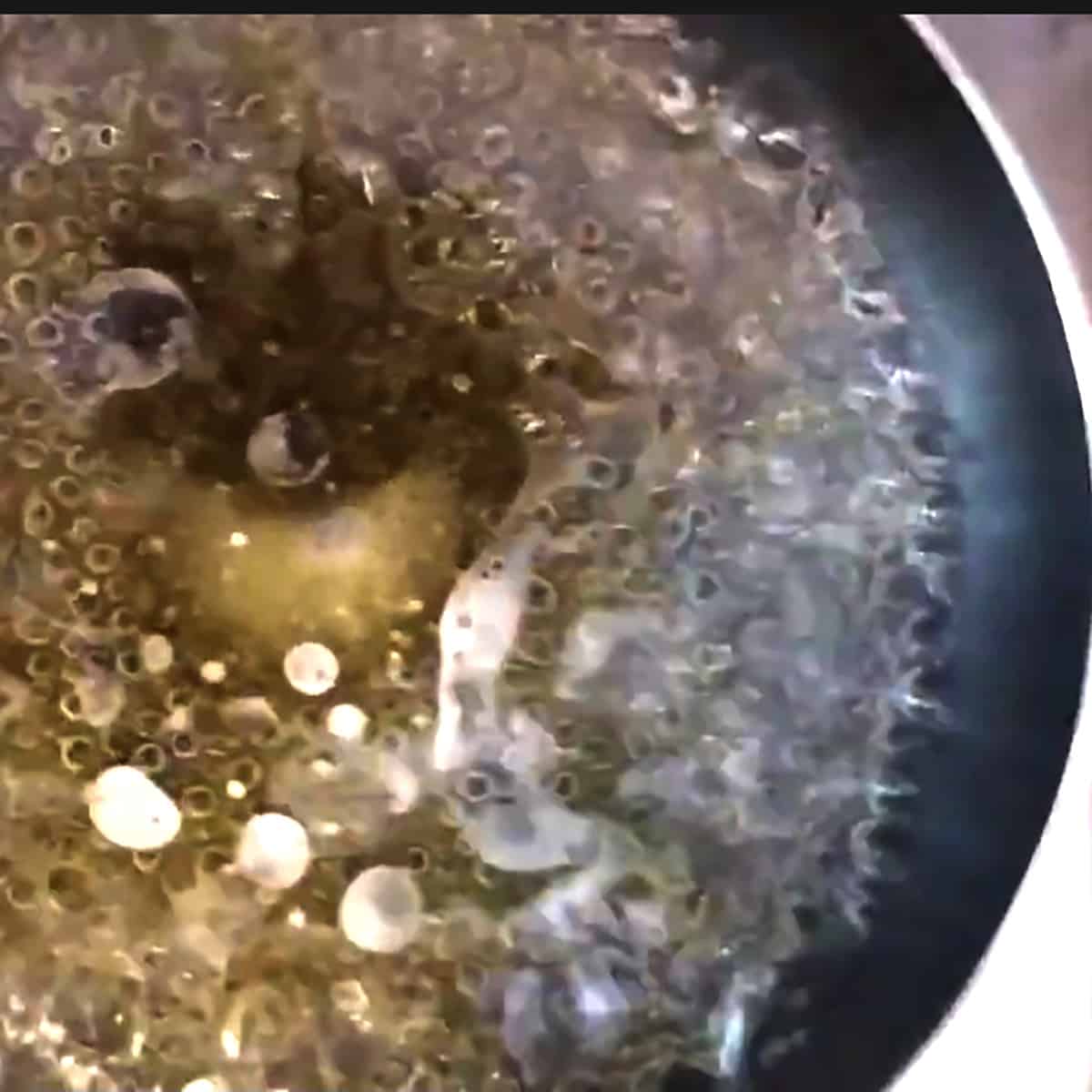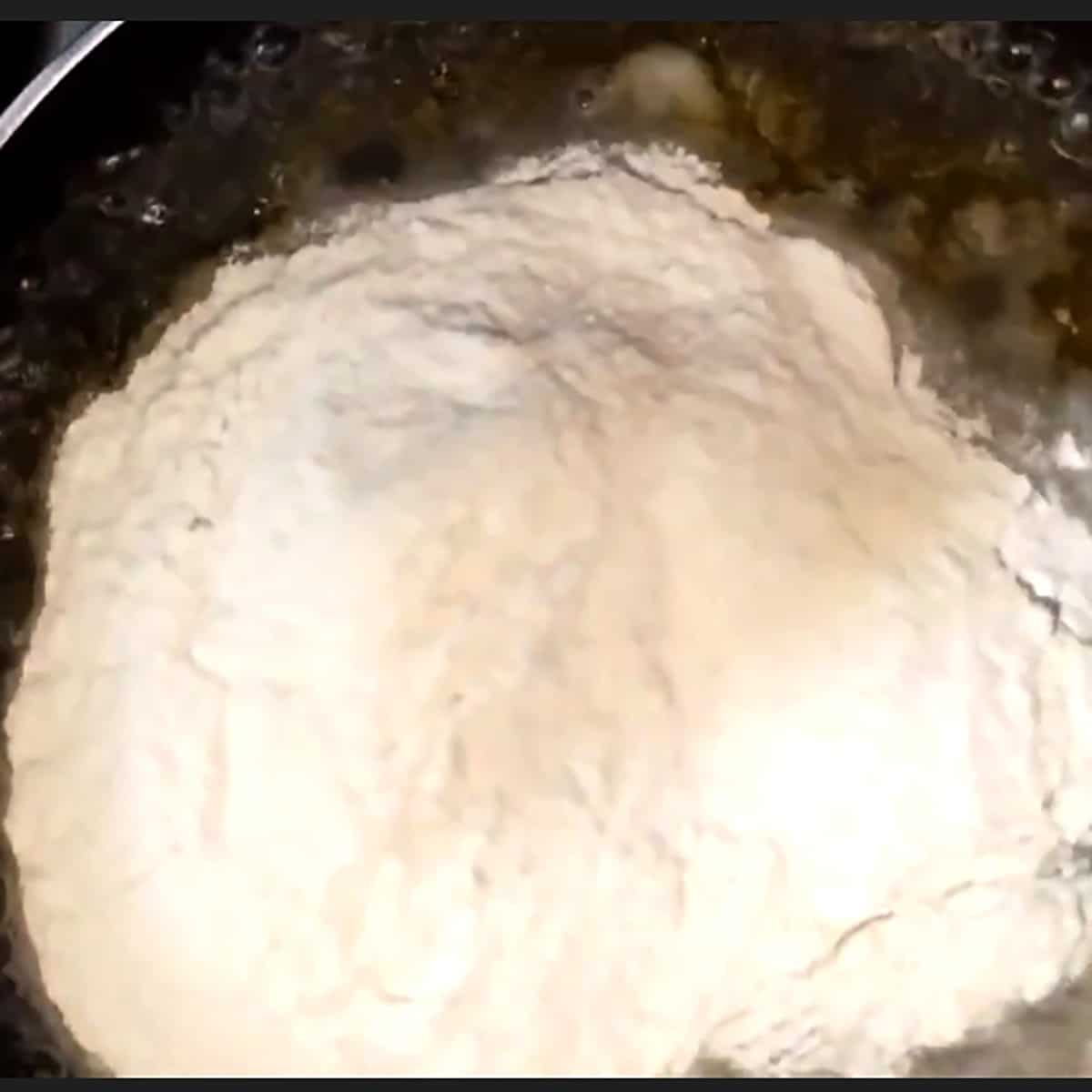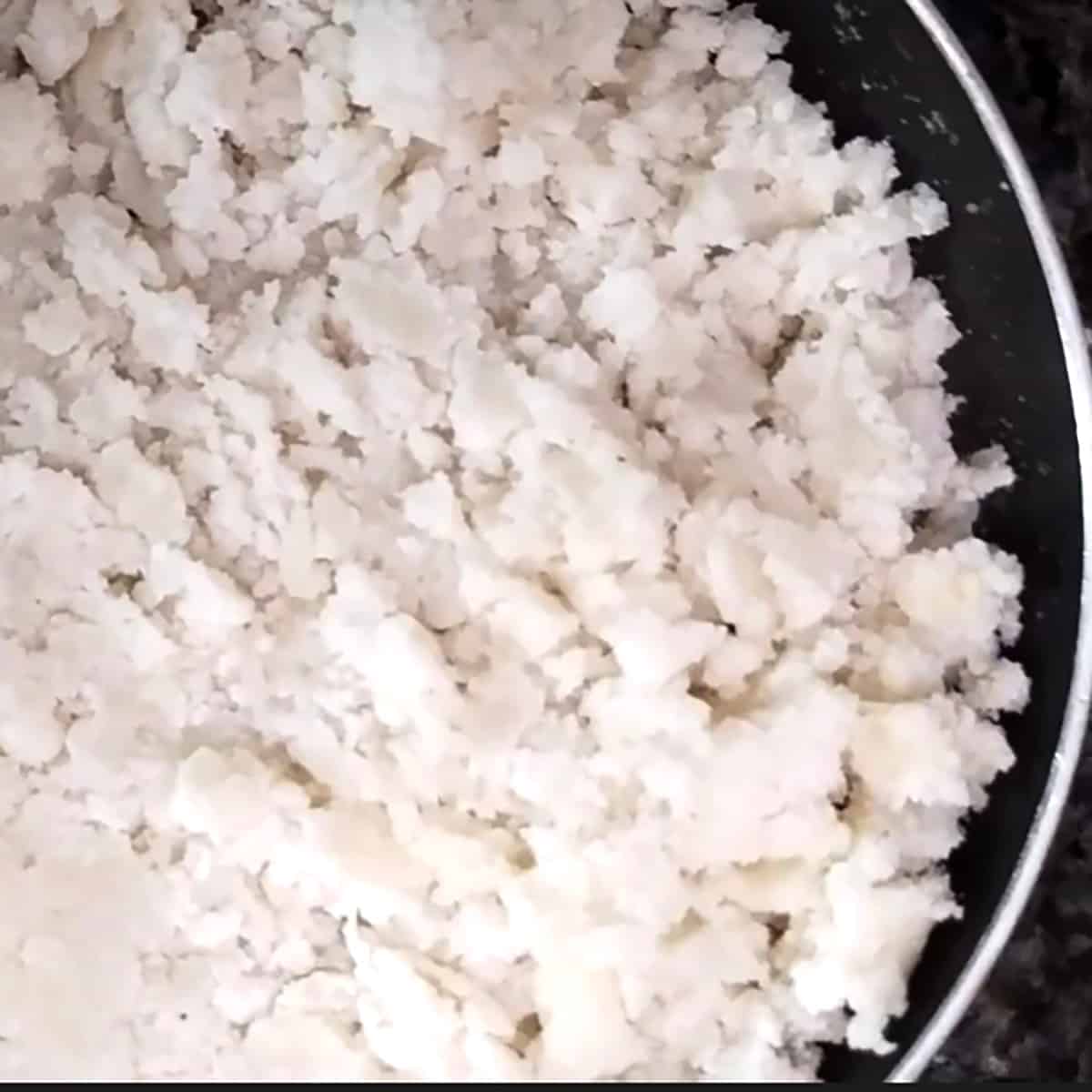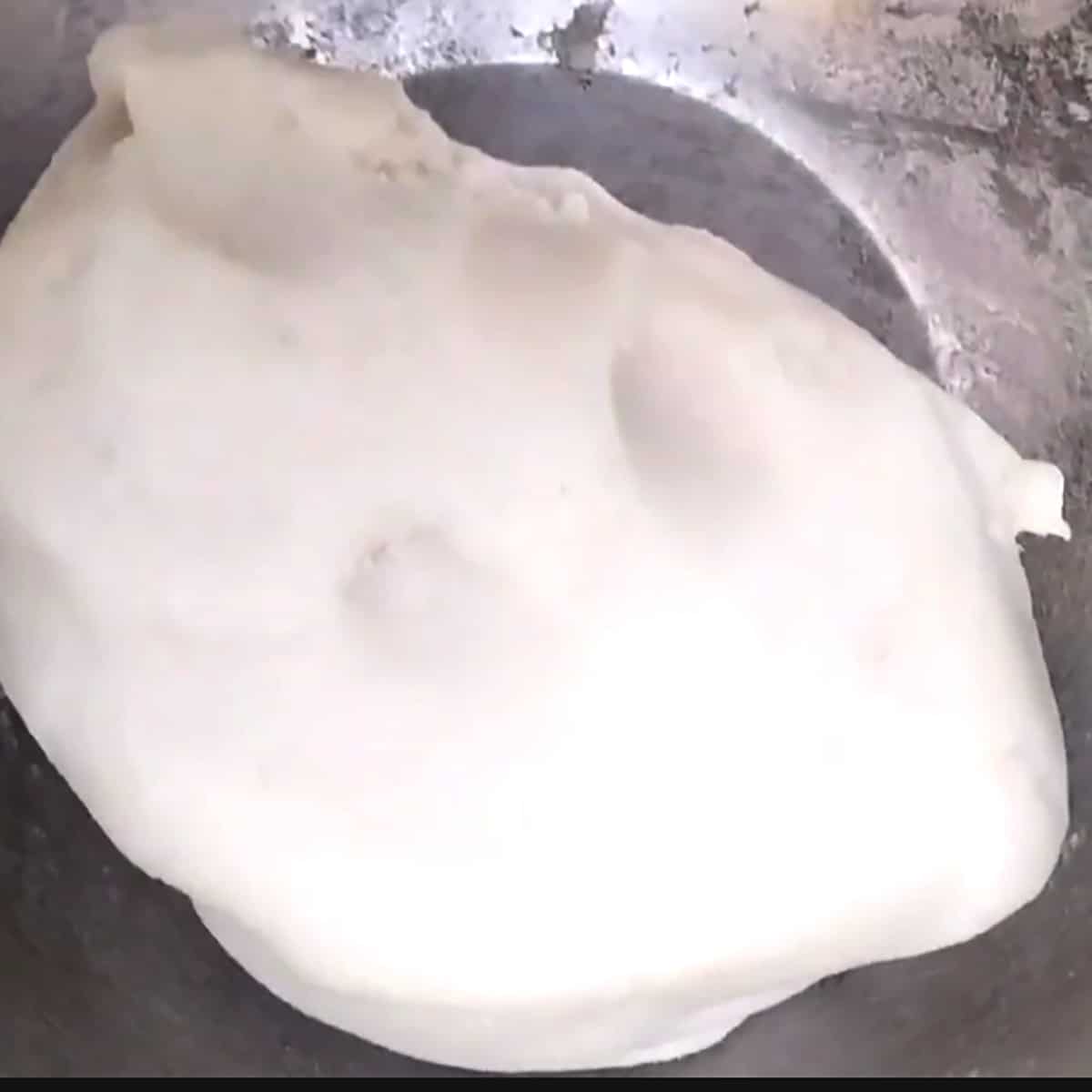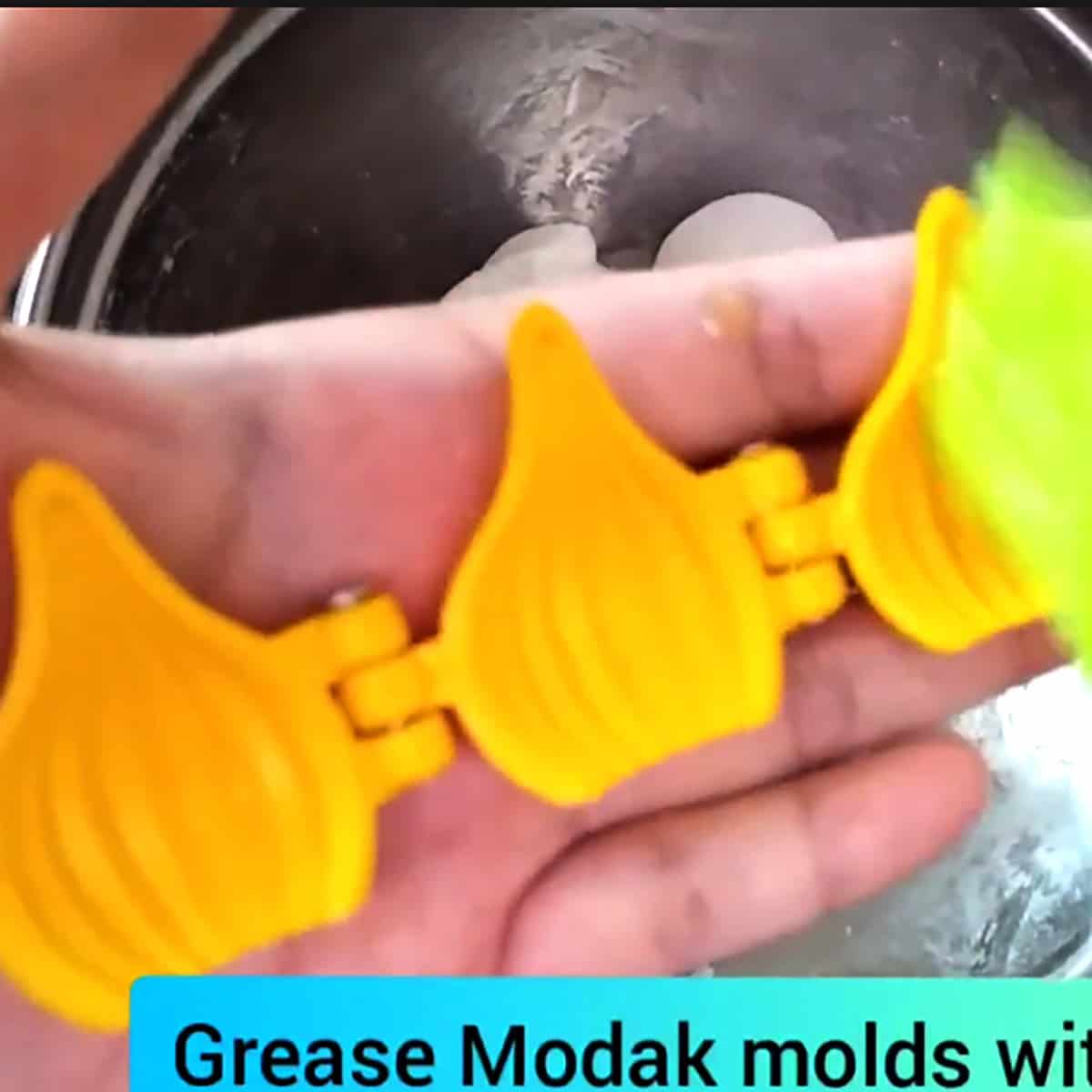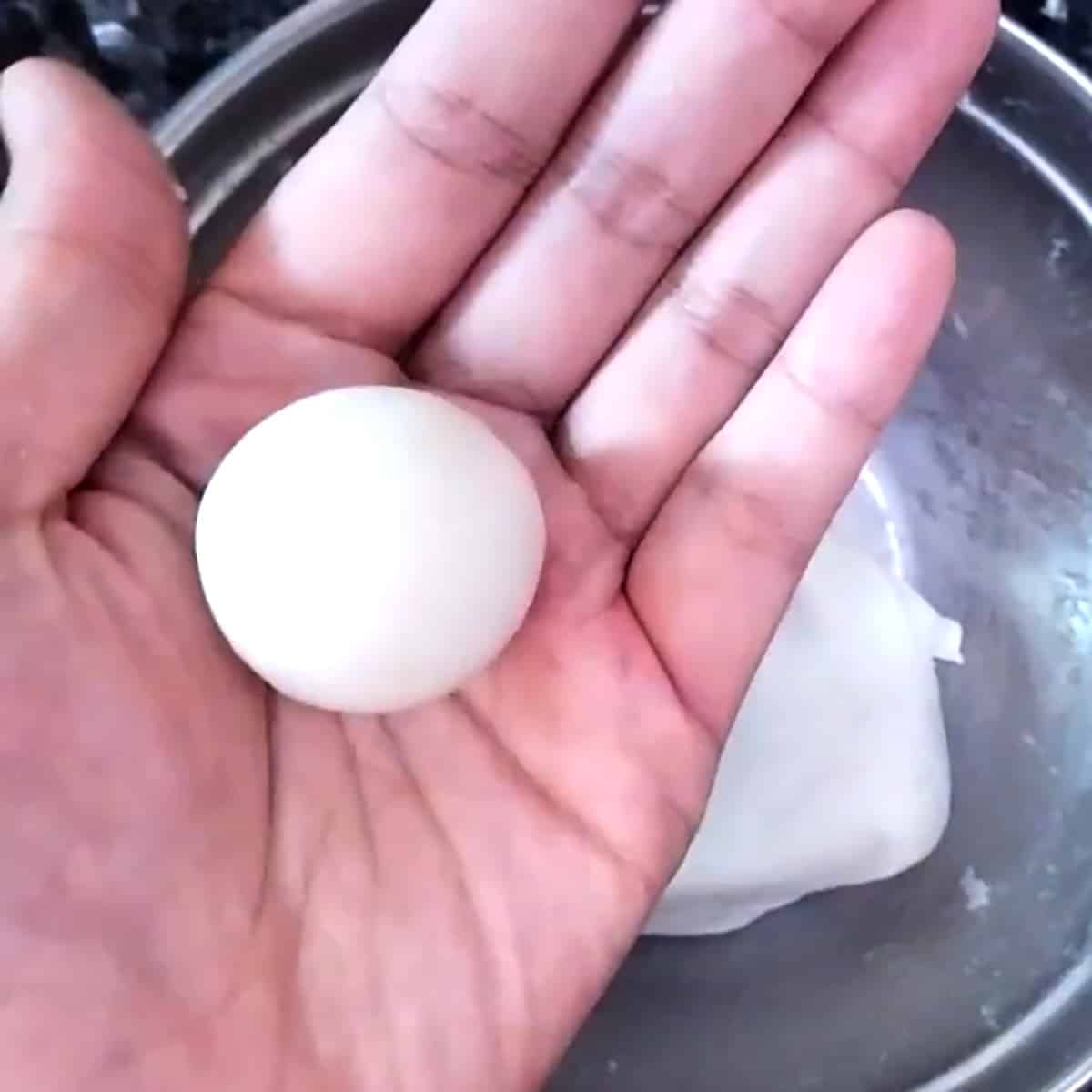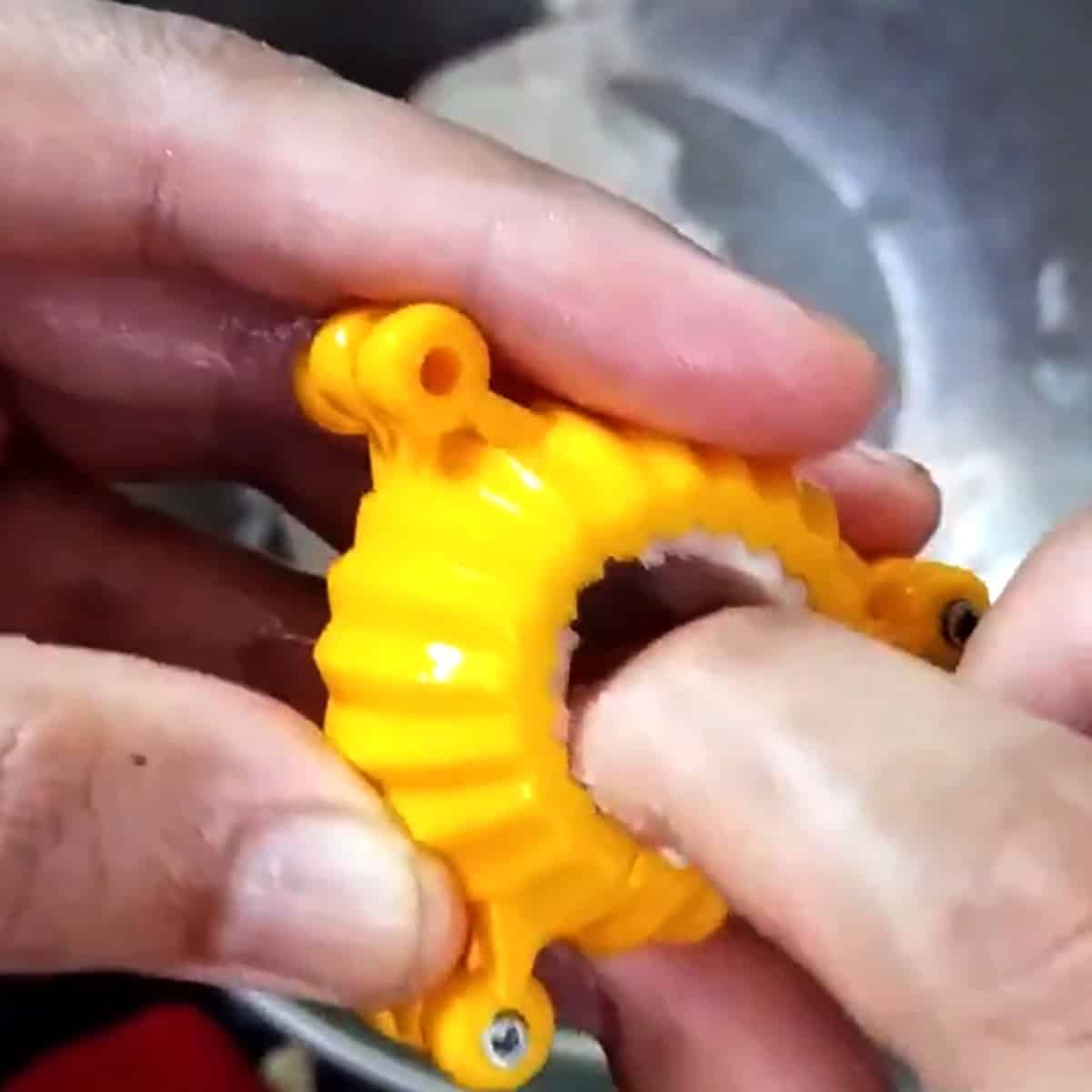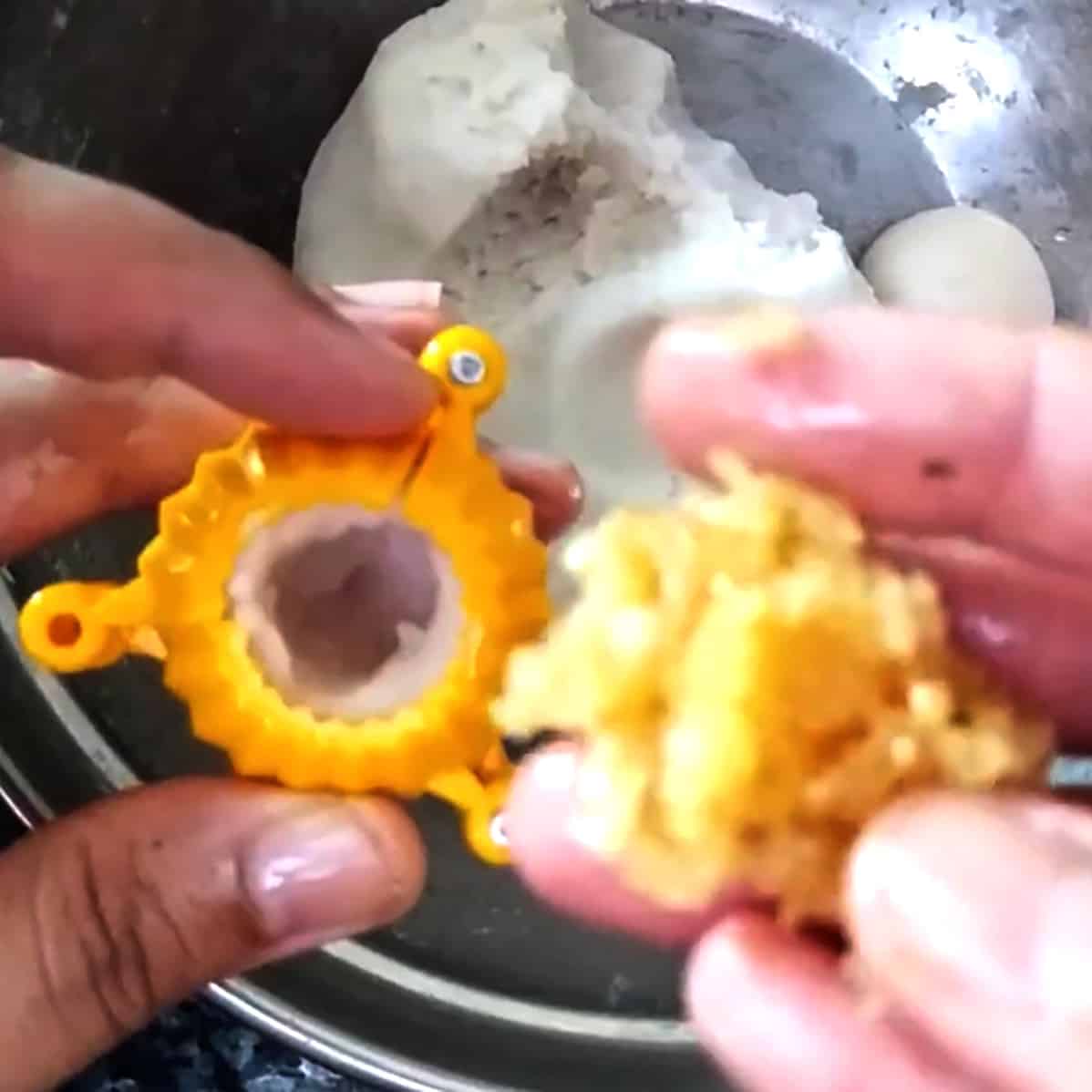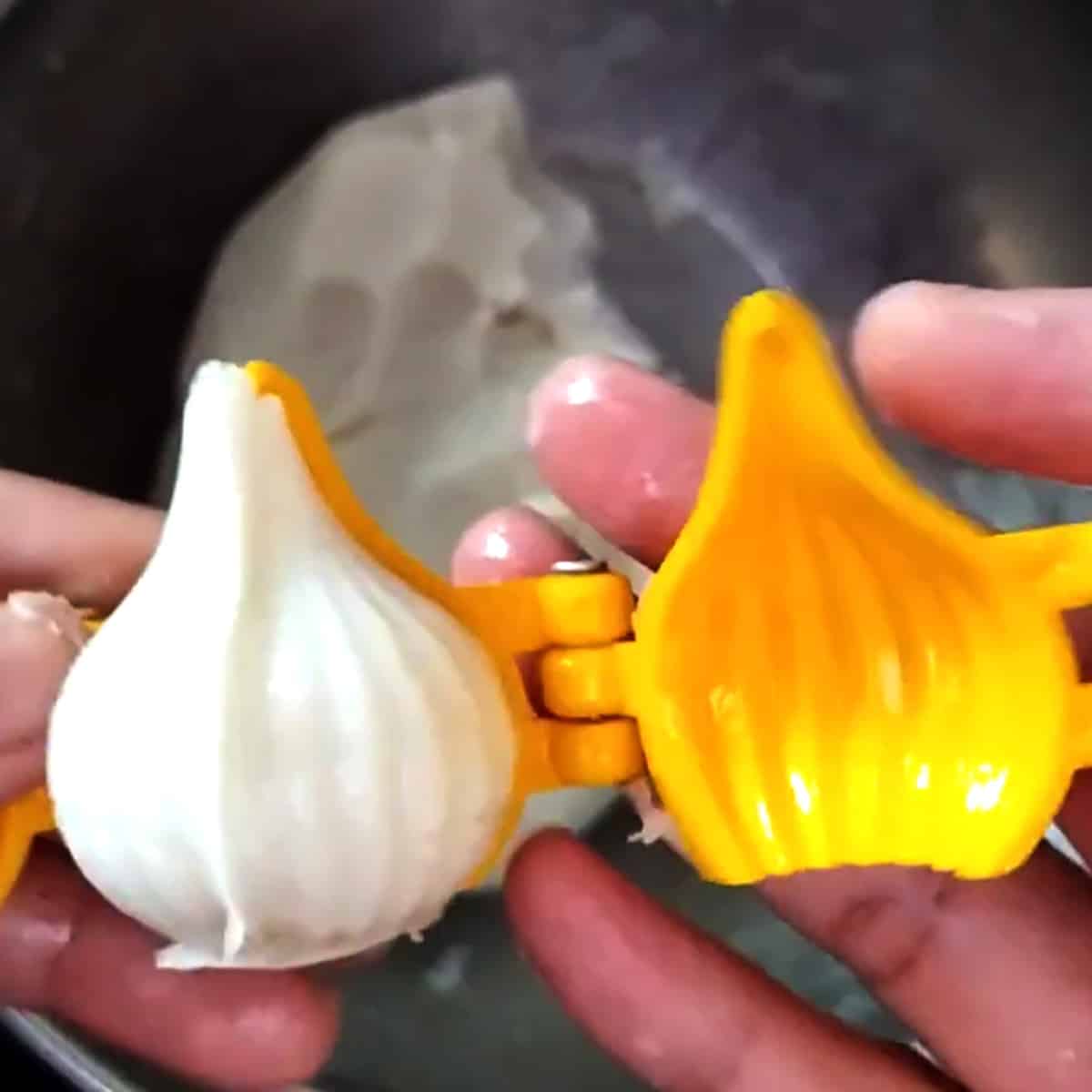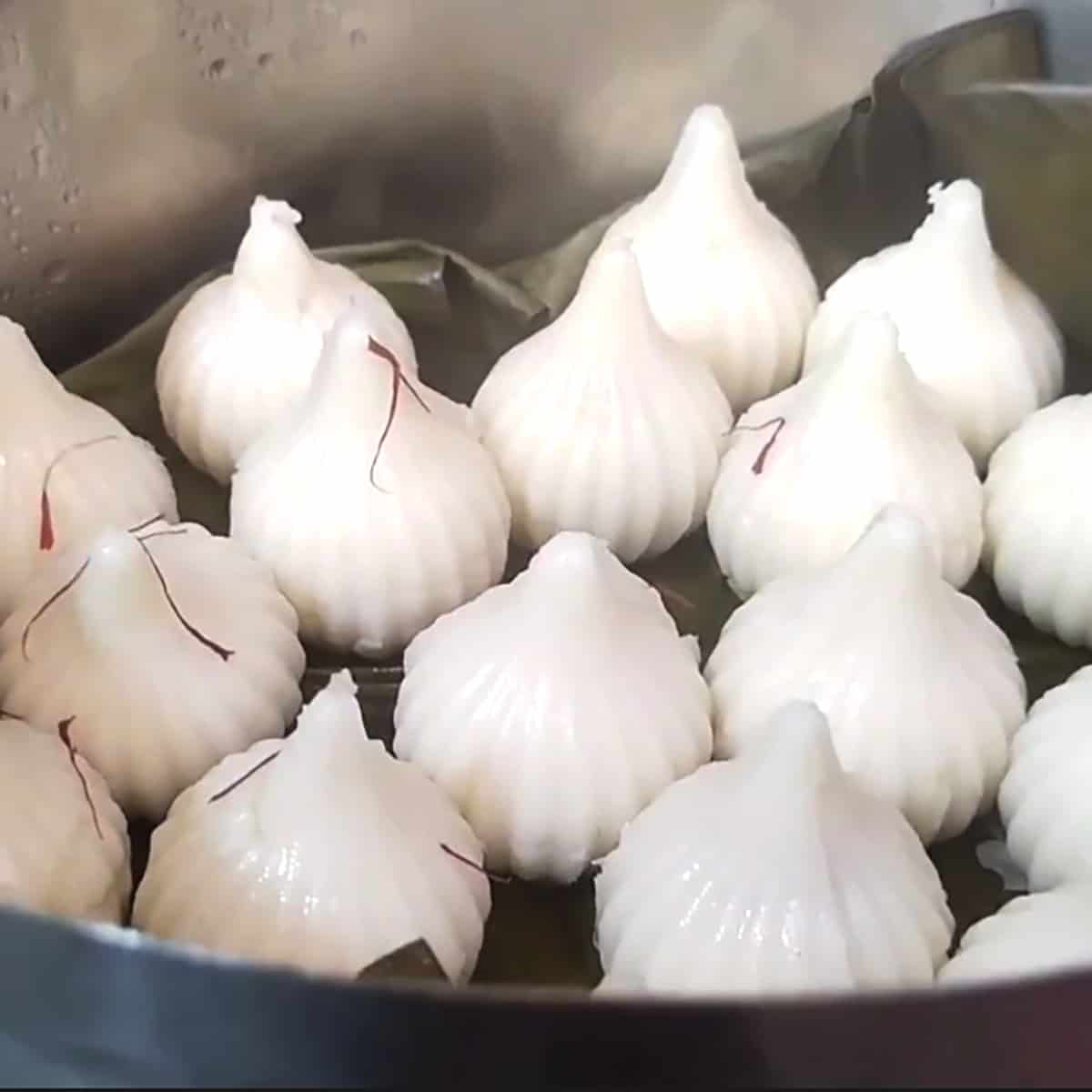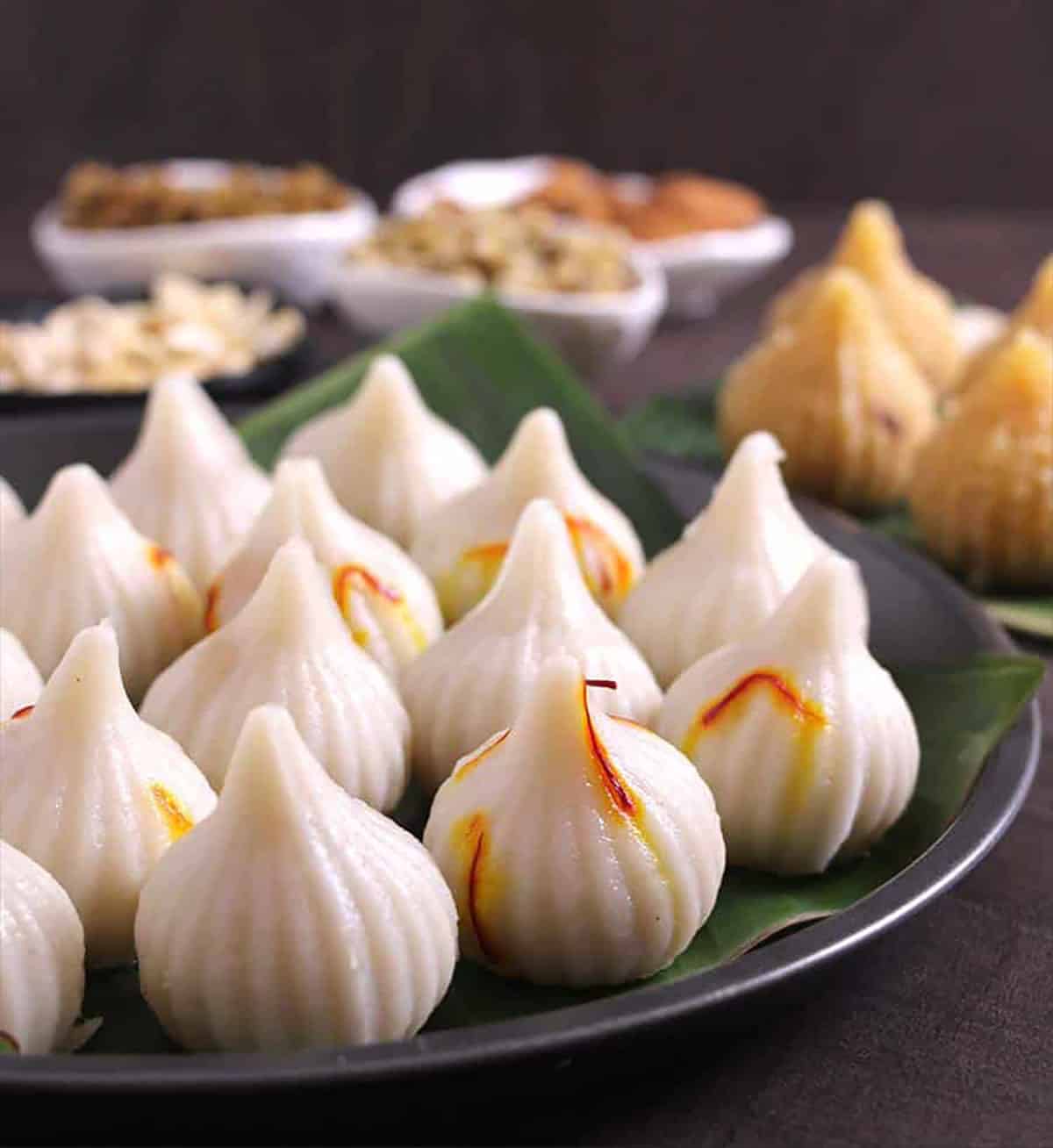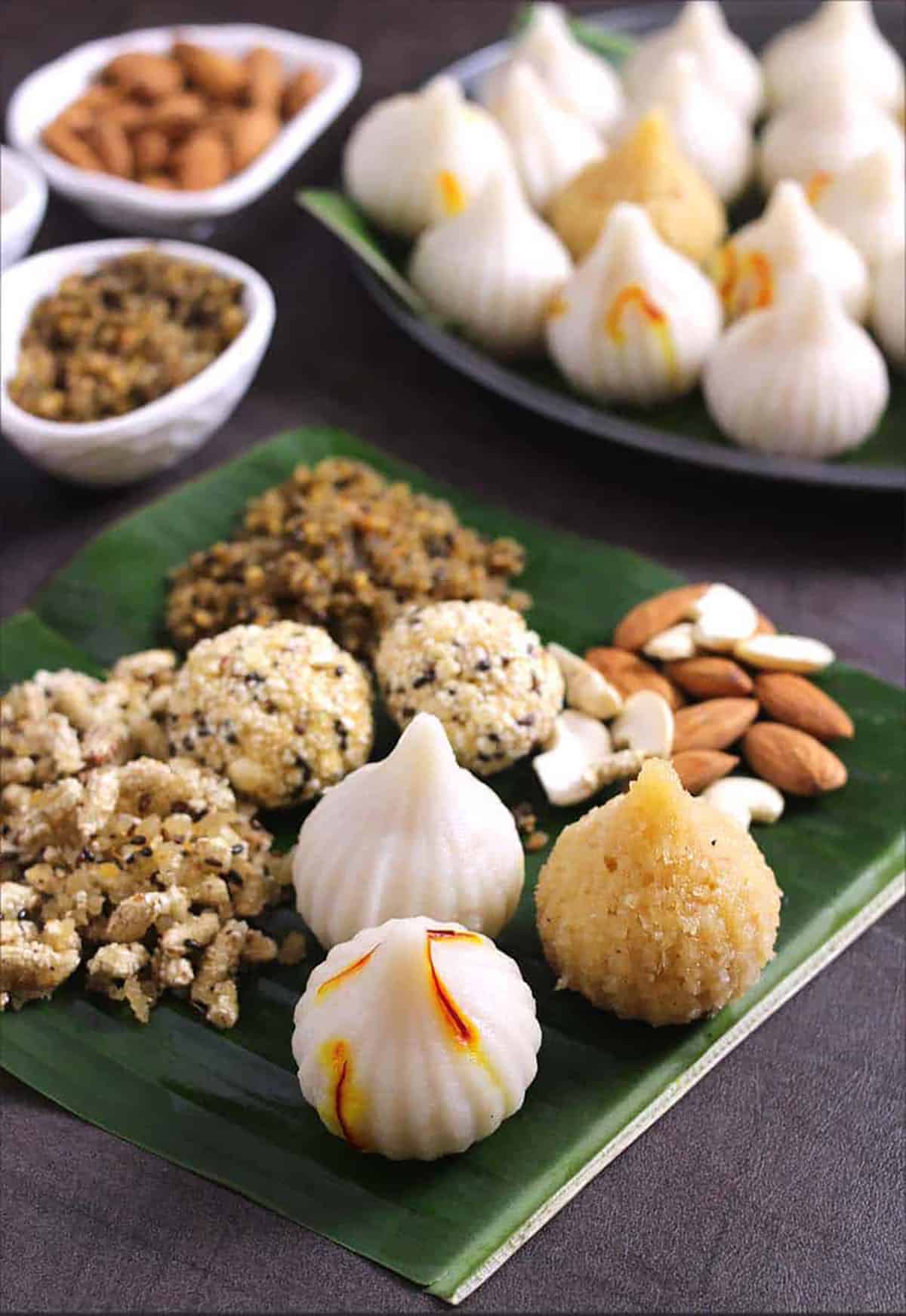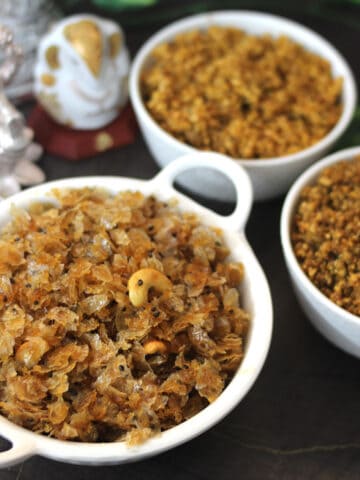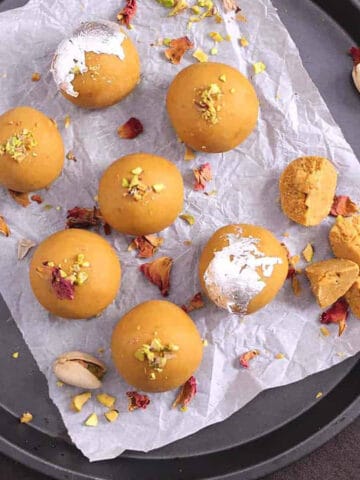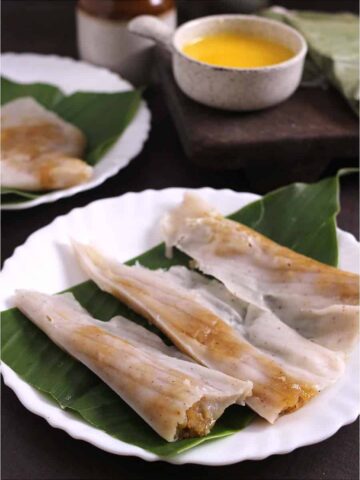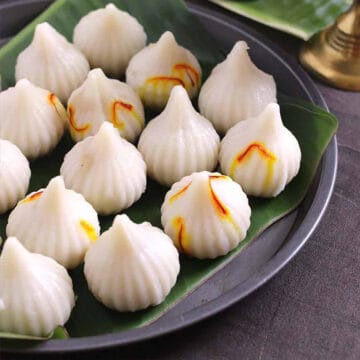Don’t miss out on checking chocolate modak, banana modak, and list of indian sweets and desserts for the festival.
What is Modak?
Modak is a popular sweet recipe made during the Ganesh Chaturthi festival as an offering to Lord Ganesha. There are two types of modak ukadiche modak called steamed modak in English, and talniche modak called fried modak. Modak is also made during sankashti chaturthi, angarika chaturthi, and gana homa pooja. 21 or 108 modaks are offered in the form of prasad, naivedyam, or bhog to Lord Ganapati during Ganesh Chaturthi. Lord Ganesha is believed to love modak so much that he is even named Modakapriya (one who likes modak). Modak is pure bliss.
Lord Ganesha’s favorite food
In our hometown, we believe that Lord Ganapati loves appe (paniyaram) along with fried banana modak, which is entirely different from the modak presented here in taste, texture, and appearance. There are so many cultural and traditional variations for a single event like Ganesh Chaturthi all across India. However, in my opinion, care, love, devotion, and faith are all that matter. Agree? List of some authentic recipes that are prepared on Ganesh chaturthi (Vinayaka chavithi) across India. Today’s post is all about ukadiche modak and different ways to make it with and without mold, including steaming in your Instant Pot.
What is Ukadiche modak?
Ukadiche means steamed in Marathi. Ukadiche Modak is a traditional Maharstarian recipe where sweetened coconut and jaggery filling is stuffed inside the rice flour dough. Kudumu, Kadubu, Kozhukattai , Modakam, and Madhaka are other names for modak in Southern states of India like Kerala, Andhra Pradesh, Tamil Nadu and prepared during Vinayaka Chavithi.
Pro Tips to make modak perfectly
Want to make the perfect modak every single time? Here are a few tips you need to follow before you start making the dough.
Soft modak dough or outer cover
The texture of the rice flour dough is very important. If the dough is dry due to less water, it won’t be easy to shape the modaks. Modaks may crack and also become chewy after steaming. A soft and smooth dough is all that you need. For 1 cup of rice flour, you will need more than 1 cup of water, which may go up to 1 ½ cups. My best practice is to bring 1 cup of water to a boil. Then, add salt, ghee, 1 cup rice flour, mix until water is incorporated with rice flour, and switch off the flame. Cover it for 4 to 5 minutes. Let the rice flour mixture cook in the residual heat. In another pan, heat ½ cup water and keep ready. After five minutes, transfer the rice flour mixture to a plate or bowl for easy kneading, and while it is still hot, start kneading the dough. Now, if you feel the rice flour mixture is dry, add water in 1 tablespoon increments, continue the kneading process, and add water in increments until a soft and smooth dough is formed. Kneading the dough is very important for a perfect modak cover. Use these tips and the amount of water suggested as a guide. The amount of water required may also vary slightly depending on the rice flour texture.
Sweet filling or stuffing
Cook the coconut-jaggery stuffing mixture until all the moisture evaporates, then switch off the flame. Do not undercook or overcook. Overcooking may make the modak stuffing hard and chewy. In this case, you can sprinkle hot water into the jaggery mixture and mix well. Undercooking or too much moisture will cause the mixture to ooze out while steaming.
Ingredients
For the modak stuffing
Coconut: Freshly grated coconut is traditionally used. You can use shredded ry or frozen coconut flakes too. Jaggery: Authentic flavor and sweetener to make festival-related sweets. Cardamom: Adds the flavor. You can use nutmeg and saffron too.
For the outer covering
Rice flour: Fine rice flour will give you the best results. It is available in any Indian grocery store. Ghee: Not only gives the aroma but also prevents the modak from sticking to the mold and makes your dough soft. See the recipe card below for a full list of ingredients and measurements.
Step-by-step instructions
For a better understanding, you can also check my video on making traditional ukadiche modak for ganapati bappa.
Coconut jaggery filling
Outer covering for modak
How to shape and steam modak?
Pro Tips
I have used fresh coconut, and it gives you the best results. You can use frozen, desiccated, or shredded coconut flakes. Never overcook the stuffing, as you cannot enjoy overcooked jaggery. I have kept the recipe very simple. Add poppy seeds, chocolate, crushed nuts, saffron, nutmeg, etc., to the filling to make it more flavorful. Knead the dough while it is still warm. If you want to avoid the multiple steps on the same day, you can make the filling a day or 2 in advance and keep it in the refrigerator. I had more amount of coconut-jaggery filling, also called churna in konkani, than the dough. Therefore, I made churna modak for my little Ganeshas at home. They love it a lot. My husband calls these golden modaks 🙂 See that you use fine rice flour for the best results.
How to make ukadiche modak without mold?
Form a lemon-sized ball from the dough. Flatten it with your palm or fingers to a disc of medium thickness. (Keep the edges thin and the center thick - just like you shape momos or dumplings). Place the filling at the center. Place the shaped modak in your steamer in a single layer. I have sprinkled saffron strands on a few of them (this is optional). Cover and steam it on a medium flame for 10 to 12 minutes. Switch off the flame. Let it sit for 2 to 3 minutes. Now press the edges to form pleats and bring all the edges to the center to form a modak. Excess dough on top can be trimmed. If you find it difficult to work with dough during this process, you can grease your hands with ghee. If you find it difficult to shape it this way, you can shape them into nevri or empanadas ( kadubu, karanji, or gujiya). That is, flatten the dough ball with the help of a rolling pin. Place the filling on one half and fold over the other half. Seal with edges with fingers or a fork for a beautiful design.
Steam Modak in Instant Pot
Pour 2 to 3 cups of water into your instant pot steel insert. Place a trivet or rack. Then, bring it to a boil in saute mode. Set the steam mode on and keep the steam vent in a venting position to release steam during the process. The timer does not work on venting mode, and instant pot (IP) will not beep here, so set an external timer for 10 to 12 minutes. After the cooking time is done, let this sit for 5 minutes before removing it from the IP.
Serving suggestions
Modak is served along with other prasadam during the festivals like appe, laddu, and panchakajjaya. You can eat it as it is or cut open the modak, drizzle ghee, and serve.
Storage suggestions
Steamed modak can be stored at room temperature for a day and in the refrigerator for 3 to 4 days. Steam them to reheat the modak before serving.
More Ganesh Chaturthi recipes
Did you like this recipe? Please leave a star ⭐️⭐️⭐️⭐️⭐️ rating below and/or a review in the comments section. You can also stay in touch with us through social media by following us on Pinterest, Facebook, Instagram, and Twitter.
Recipe card
This post contains affiliate links, which means I will earn a commission if you click through and buy something at no additional cost to you!
